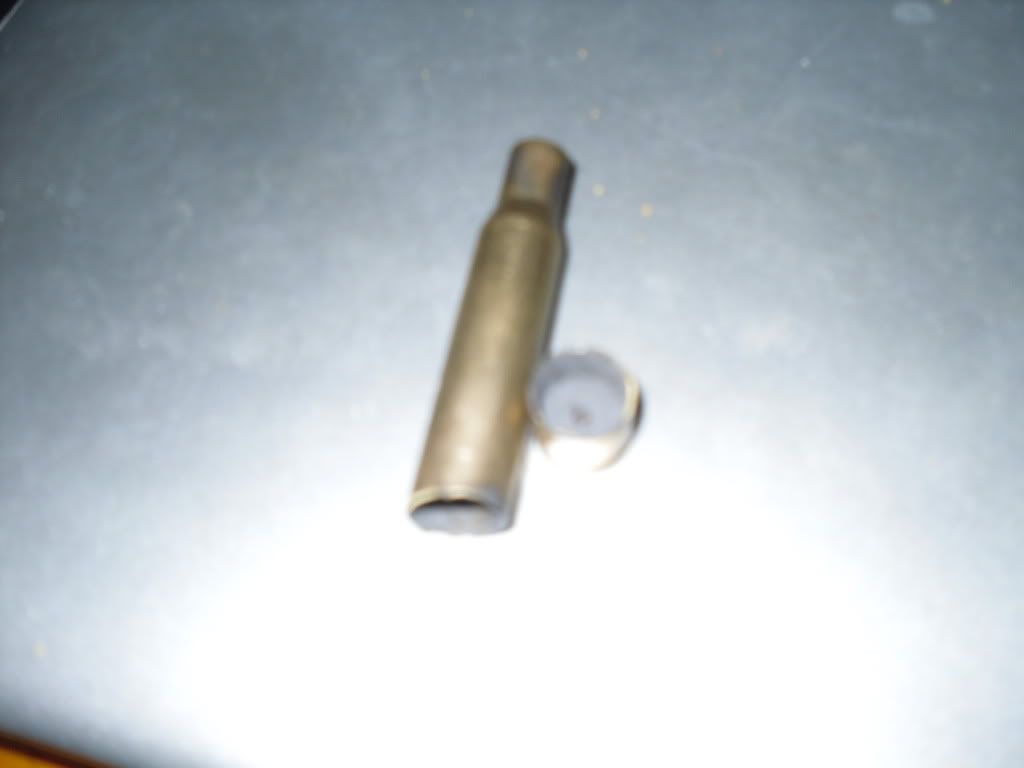I know a lot of y'all already know this, but thought I'd post a few pics. Maybe a sticky? Maybe add to Tresmon's reloading stickys?
This is a piece of Lapua 308 brass I've loaded about 8 or 9 times. Hot!! loads of 45.5gr Varget and a 175smk. I FLS every loading, but have my dies set to bump the shoulder .001". I use the Hornady insert type gage that attaches to my caliper.
In the first pic, you can see the "ring" around the body of the case, forward of the casehead. I scotch-brited one half of the sectioned case to make the ring really pop for the picture, but it is also clearly visible without Scotchbrite. This cartridge looked good going into the chamber, but had the ring after firing. It was very obvious then, because the brass wasn't tarnished at all.

Another view:

A look inside... you can see where the brass has thinned out and stretched. When new, the casewall thickness has a constant taper, from casehead to neck, and does NOT have the dip you see here.

Good shooting, and pay attention ALWAYS!
This is a piece of Lapua 308 brass I've loaded about 8 or 9 times. Hot!! loads of 45.5gr Varget and a 175smk. I FLS every loading, but have my dies set to bump the shoulder .001". I use the Hornady insert type gage that attaches to my caliper.
In the first pic, you can see the "ring" around the body of the case, forward of the casehead. I scotch-brited one half of the sectioned case to make the ring really pop for the picture, but it is also clearly visible without Scotchbrite. This cartridge looked good going into the chamber, but had the ring after firing. It was very obvious then, because the brass wasn't tarnished at all.

Another view:

A look inside... you can see where the brass has thinned out and stretched. When new, the casewall thickness has a constant taper, from casehead to neck, and does NOT have the dip you see here.

Good shooting, and pay attention ALWAYS!





